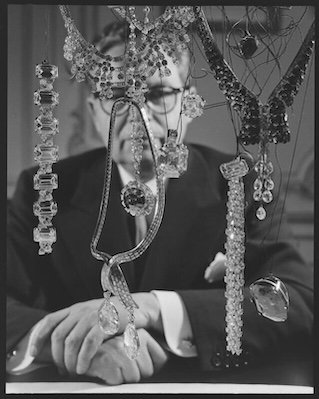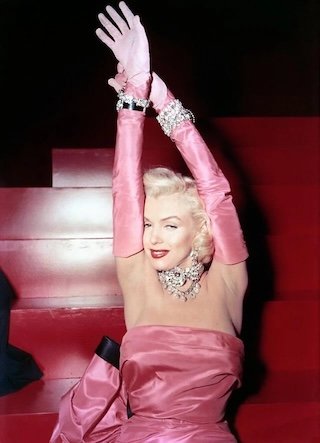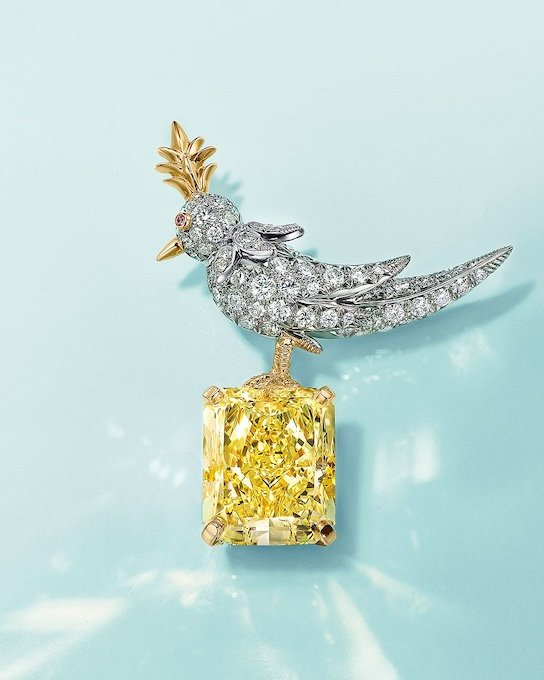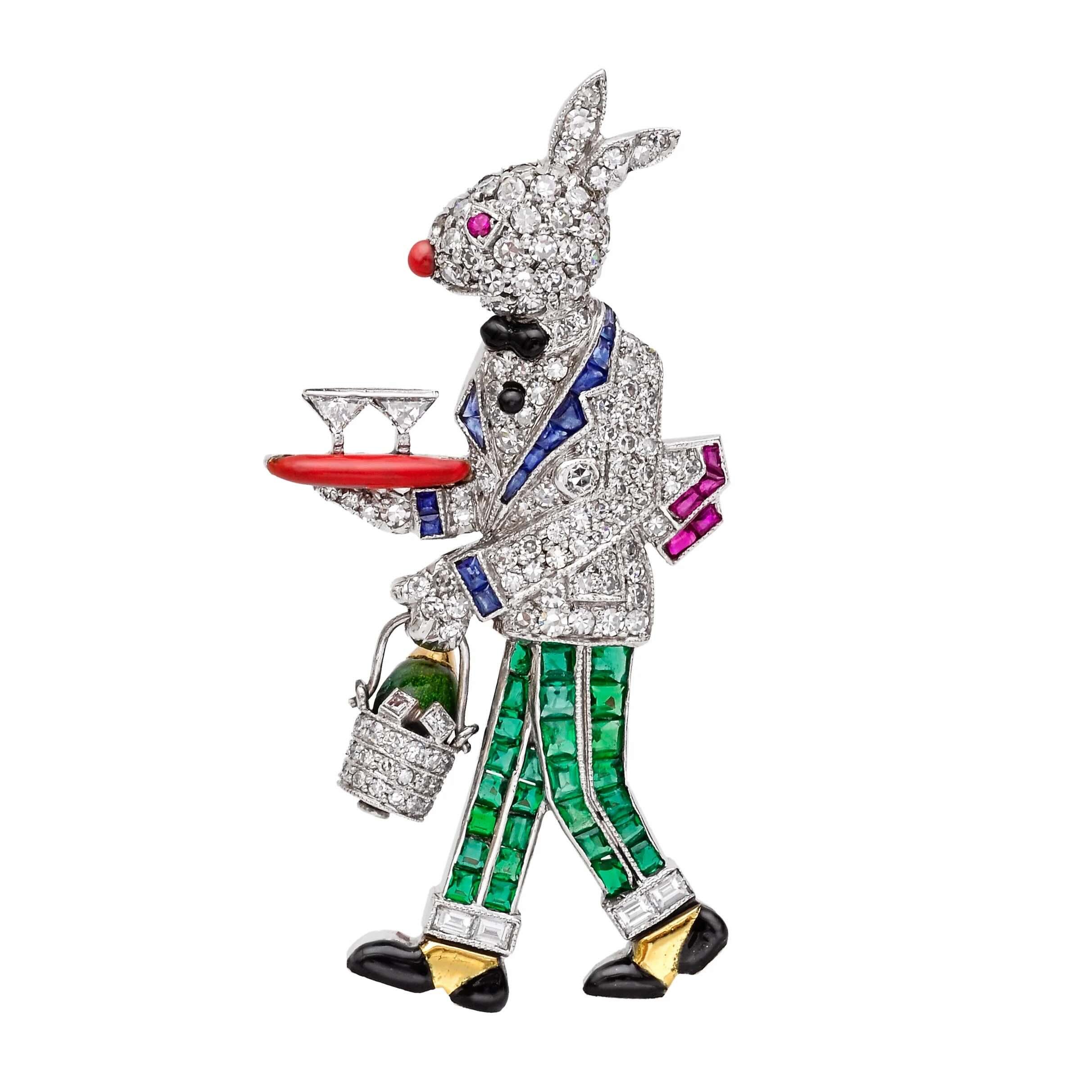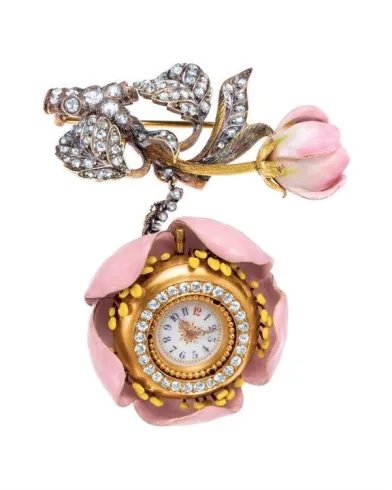Celebrating the Best of American Jewelers
American jewelers have shaped the world of fine jewelry in remarkable ways. What started from humble beginnings in colonial America evolved into global leaders in innovation and design. These jewelers were influenced by European techniques but infused with a unique sense of artistry and ambition, and they congregated in major eastern cities like New York and Philadelphia—think the Diamond District and Jewelry Row. These trailblazers, from the grand luxury houses like Tiffany & Co. and Harry Winston to bold innovators like David Webb and Oscar Heyman, have not only defined American luxury but also left an indelible mark on global fashion. In today’s article, we’ll explore the history and contributions of some of the most elite American jewelers who shaped the industry—each one bringing innovation, beauty, and heritage into every gem, setting, and design. Join us as we celebrate their everlasting contributions to the world of haute joaillerie.
History of American Jewelers
The early development of American jewelry was deeply influenced by European traditions, especially during the 19th century. Many jewelers in the U.S. were trained in European workshops or drew inspiration from Old World craftsmanship. However, as the century progressed, American jewelry began to form its own identity, exacerbated by significant events like the discovery of diamond deposits in South Africa in the 1860s and the expansion of domestic resources such as gold and silver. These discoveries allowed American jewelers to source raw materials more directly, fueling growth in the industry and leading to the rise of manufacturing hubs in cities like Newark, Philadelphia, and New York City, which produced both luxurious and affordable pieces. This combination produced a distinct style that blended tradition with innovation, setting the stage for the golden age of American jewelry design in the early 20th century.
The Victorian Era saw the rise of Tiffany & Co., a pioneer in setting standards for American jewelry through high-quality craftsmanship and design. Marcus & Co. became known for its artistic enamel work during the Art Nouveau movement. At the same time, the 1920s and 1930s ushered in the Art Deco era, where geometric shapes, vibrant colors, and lavish gemstones dominated designs.
Figures like Raymond Yard and Paul Flato rose to prominence during this time, shaping the aesthetic of American glamor. Their creations, beloved by Hollywood’s elite, epitomized the elegance and sophistication that defined American jewelry in the early 20th century.
Harry Winston: King of Diamonds
Founded in 1932 in New York City, the name Harry Winston became synonymous with luxury and exceptional quality. Winston, often referred to as the "King of Diamonds," was renowned for acquiring some of the world's most famous gemstones, including the Hope Diamond and the Jonker Diamond. Winston's legacy mirrors his ability to transform extraordinary stones into breathtaking pieces of jewelry.
The House of Winston has always been at the forefront of innovation, pioneering new diamond cuts and settings that emphasize the natural beauty of diamonds. Known for his focus on quality over quantity, Harry Winston's work reflects a deep understanding of gemology and design.
Windsor Jewelers was fortunate to acquire a remarkable Harry Winston suite in 2020. The stunning pieces were originally commissioned by Middle Eastern royalty and boasted almost 300 carats of brilliant diamonds. Windsor Jewelers is the proud owner of the Arcot II diamond, a historic gem once paired with the Arcot I in a magnificent Harry Winston necklace. Originally gifted to Queen Charlotte of England by the Nawab of Arcot, the diamonds were later passed down through the British royal family. Harry Winston acquired both diamonds, incorporating them into one of his signature designs. The Arcot II has since been separated from its counterpart, now residing with Windsor Jewelers as a symbol of its commitment to acquiring rare and illustrious gems.
Harry Winston has long been a go-to jeweler for Hollywood stars. Over the years, numerous A-list celebrities have worn his designs on the red carpet. Here are some of the iconic figures who have been spotted in Harry Winston jewelry:
Marilyn Monroe – In "Gentlemen Prefer Blondes", Monroe famously sings "Diamonds Are a Girl’s Best Friend" while wearing Harry Winston diamonds. Other famous starlets known to be fans of Harry Winston include Elizabeth Taylor and Audrey Hepburn.
Harry Winston’s legendary jewels have graced royal icons as well. Notable royals donned the jewels on formal occasions, including Queen Elizabeth II, Princess Grace of Monaco, Princess Diana, The Duchess of Windsor Wallis Simpson, The Duchess of Sussex, and Meghan Markle.
Tiffany & Co.: America’s Jeweler
Established in 1837 by Charles Lewis Tiffany and John B. Young, Tiffany & Co. is conceivably the most iconic name in American jewelry. What began as a stationery and fancy goods store in New York City evolved into a premier fine jewelry brand that set the gold standard in the United States. The introduction of the Tiffany Blue Box® has since become a symbol of elegance, quality, and prominence.
Tiffany & Co. is credited with many industry-defining innovations. In 1851, it adopted the British silver standard, ensuring the purity and quality of its products. The creation of the Tiffany Setting in 1886 revolutionized the engagement ring, elevating the solitaire diamond as the ultimate symbol of love and commitment. Tiffany also transformed the modern retail experience, making luxury jewelry more accessible to the masses.
The Tiffany & Co. Schlumberger Collection showcases the brilliant and creative mind of Jean Schlumberger. Beginning in 1956, his whimsical, nature-inspired designs brought a fresh sense of artistry to the world of fine jewelry. His “Bird on a Rock” design—arguably his most famous— featured a bird atop the world-renowned Tiffany Diamond, which married the idea of playfulness with luxury jewelry.
Elsa Peretti joined Tiffany & Co. in 1974 and quickly became one of their most trailblazing designers. Her minimalistic pieces were not only beautiful but wearable for the everyday American. Peretti’s aesthetic was inspired by nature and the human form, which is evident in one of her most famous creations, the Bone Cuff. This sculptural bracelet, designed to contour to the wrist, was a bold departure from traditional jewelry, blending form and function in a way that felt both modern and timeless.
Paloma Picasso, the daughter of the infamous artist, brought her own artistic flair with designs like the Olive Leaf collection, making her one of Tiffany & Co.’s most celebrated designers since 1980. The Olive Leaf pulled inspiration from the Mediterranean landscape, symbolizing peace and abundance with intricate leaf motifs in gold and sterling silver, reflecting Picasso’s love for art and architecture.
As mentioned previously, Tiffany’s other-worldly Tiffany Diamond, a 128.54-carat yellow diamond, is one of the world’s largest and most famous gemstones. However, Tiffany’s cultural influence extends beyond its products—its famous Tiffany Diamond showcased in "Breakfast at Tiffany's," and its annual Blue Book Collection, displaying its most exquisite designs of the year, have left a lasting legacy in American heritage.
David Webb: Bold American Design
When David Webb founded his eponymous brand in 1948 in New York City, he quickly gained renown for his daring and vibrant designs, drawing inspiration from nature and ancient civilizations. His work has been aptly described as a harmonious blend of audacity and refinement, with each piece exuding a distinctive flair that captivates the most discerning connoisseurs.
Webb’s creations are celebrated for their unmistakable craftsmanship, particularly his iconic carved and enameled animal bracelets, opulent gold necklaces, and striking sautoirs. His designs showcase a bold mastery of color, texture, and form, with Maltese cross brooches, dramatic combinations of pearls and diamonds, and the exceptional use of rock crystal elevating his artistry. Among his collections, the Animal Kingdom stands as perhaps his most cherished, featuring exquisitely carved and intricately enameled animal bracelets, brooches, and rings that have become symbols of luxury and individuality.
David Webb’s enduring legacy is cemented by his presence in the permanent collections of prestigious institutions, including the Metropolitan Museum of Art (New York, NY), the Musée des Arts Décoratifs (Paris, France), the Museum of Arts and Design (New York, NY), the Newark Museum (Newark, NJ), and the Houston Museum of Fine Arts (Houston, TX), affirming his place among the greats of 20th-century jewelry design.
Oscar Heyman: The Jeweler’s Jeweler
Founded in 1912 by brothers Oscar and Nathan Heyman, Oscar Heyman & Brothers earned the reputation as the "jeweler’s jeweler." With training in the rigorous workshops of Fabergé, the Heyman brothers brought a European level of precision and quality to American jewelry.
Their designs have long been regarded as timeless, using iconic gemstones such as ruby, emerald, and sapphire, as well as leaning into rainbow, pastel, and star sapphire varieties.
The Heyman family’s dedication to impeccable craftsmanship led them to collaborate with prestigious firms such as Cartier, Tiffany & Co., and Van Cleef & Arpels, creating pieces that would be treasured for generations. Oscar Heyman’s designs demonstrate an unrivaled commitment to beauty and quality.
J.E. Caldwell: The Pride of Philadelphia
Founded in 1839 by James Emmot Caldwell, J.E. Caldwell became a symbol of Philadelphia’s elite, acclaimed for its high-quality silverware and jewelry. Caldwell himself was known as an expert silversmith as well as a jeweler. The brand’s jewelry division specializes in engagement and wedding rings, making its name synonymous with love and commitment.
Caldwell’s pivotal role in the Art Nouveau and Art Deco movements, defined by intricate hand-engraving and the masterful use of gemstones, further cemented the brand’s prominence in American jewelry history. Notable creations, such as the design of the iconic Peace Dollar coin, exemplify Caldwell’s unparalleled ability to fuse artistic vision with impeccable craftsmanship, securing its legacy among the finest names in American jewelry.
Black, Starr & Frost: America’s First Jeweler
Established in 1810 in New York City, Black, Starr & Frost is one of America’s oldest jewelers. It is known for luxury watches, fine jewelry, and notable clients, including industrialists and celebrities. The firm excelled at diamond cutting and creating settings, and it was responsible for introducing the solitaire diamond ring to Americans, cementing its place in the luxury jewelry market.
In addition to its role in the jewelry world, Black, Starr & Frost designed the inaugural medals for President Calvin Coolidge, a testament to its influence in American history.
Raymond Yard: The Jeweler of the Elite
Raymond Yard, who began his career as an apprentice at Marcus & Co., founded his own jewelry house in 1922 in New York City, with a push from John D. Rockefeller, Jr. The brand quickly became synonymous with bespoke, high-end jewelry for America’s elite. Catering to the Rockefeller and Vanderbilt families, as well as Hollywood stars, Yard’s designs were characterized by their use of geometric shapes, platinum settings, and high-quality diamonds and gemstones.
Yard's designs often featured Art Deco influences, including geometric shapes, platinum settings, and the use of high-quality diamonds, emeralds, and sapphires. However, it was his playful, whimsical creations that also captured the imagination of his clientele.
During Prohibition, Yard cleverly designed discreet yet elegant brooches in the shape of cocktail glasses and champagne bottles, a humorous nod to the era’s fascination with speakeasies and hidden festivities. One of his most beloved motifs is his series of rabbit brooches, which feature manlike rabbits dressed in tuxedos, golfing, or even dancing, reflecting both Yard’s creativity and his clientele's desire for pieces that exuded both elegance and charm. These rabbit brooches have since become elite collectors’ items, embodying Yard's ability to blend wit with sophistication.
Marcus & Co.: The Art Nouveau Jeweler
Marcus & Co. became a leading force in American jewelry during the Art Nouveau period, celebrated for its intricate and masterful use of enamel and gemstones. Their designs featured graceful depictions of flowers, vines, and insects, often brought to life through vibrant, multicolored enamel and detailed, organic forms. Founder Herman Marcus had a strong background in European jewelry design, which helped him create pieces that were both luxurious and artful, blending the elegance of French Art Nouveau with a distinctly American flair.
One of Marcus & Co.’s signature techniques was plique-à-jour enamel, a challenging method that creates a stained-glass effect by allowing light to shine through the enamel, bringing the designs to life with luminous color. The firm’s work during the Art Nouveau era was also known for incorporating precious gemstones like opals, sapphires, and diamonds, elevating each piece to a level of unparalleled luxury.
Paul Flato: Hollywood’s Jeweler
Hollywood’s Golden Era was synonymous with the glitz and glamor of Paul Flato, celebrated as one of the first American "jeweler to the stars." Active primarily in the 1930s and 1940s, Flato's innovative and whimsical designs gained him a loyal following among Hollywood's elite, including stars like Marlene Dietrich, Greta Garbo, and Katharine Hepburn.
His work, known for its bold and imaginative flair, often featured intricate motifs such as feathers, ribbons, and surrealist elements, setting him apart from traditional jewelry styles of the time. Flato's influence in jewelry design helped shape Hollywood glamour, and his pieces remain iconic representations of Art Deco luxury and creativity.
Originally born in Shiner, Texas on September 1, 1900, Flato was raised in a typical German immigrant family who came to the United States in pursuit of the American dream. Flato moved to New York City in the fall of 1920, enrolling at Columbia University in 1921. Having to drop out of college for a lack of funding, Flato began to apprentice with jeweler Edmund Frisch on Fifth Avenue. With the help of a friend at Tiffany & Co. and Flato’s increasingly upscale social connections, he was able to go into business on his own after just a few years. In a short period of time, he was featured in Vanity Fair and Harper’s Bazaar, having achieved $1 million of sales by 1927.
Paulding Farnham: Tiffany’s Master Designer
Born in 1859, Paulding Farnham revolutionized Tiffany & Co.’s design aesthetic with his intricate enamel work and nature-inspired motifs. Farnham’s designs, such as the enameled orchid brooches that won international acclaim, showcased his unparalleled talent and attention to detail.
His contributions helped Tiffany & Co. earn multiple awards, including a gold medal at the 1889 Paris Exposition. Farnham's legacy as a master designer continues to influence Tiffany’s design philosophy today.
Our Concluding Thoughts
The history of American jewelry is a rich tapestry of innovation, artistry, and craftsmanship. From the early influences of European design to the bold, distinctive styles that define American Hollywood glamor, these jewelers not only left their mark on the industry, many were foundational in its creation. Their legacy is one of enduring beauty, quality, and a dedication to excellence that continues to inspire.
If you’re interested in learning more about fine and estate jewelry or wish to sell a piece from any of these iconic designers, Windsor Jewelers is here to help. With a legacy of expertise in vintage and estate jewelry, we embrace the magnetism of haute jewelry and guarantee you a seamless and rewarding selling experience.


